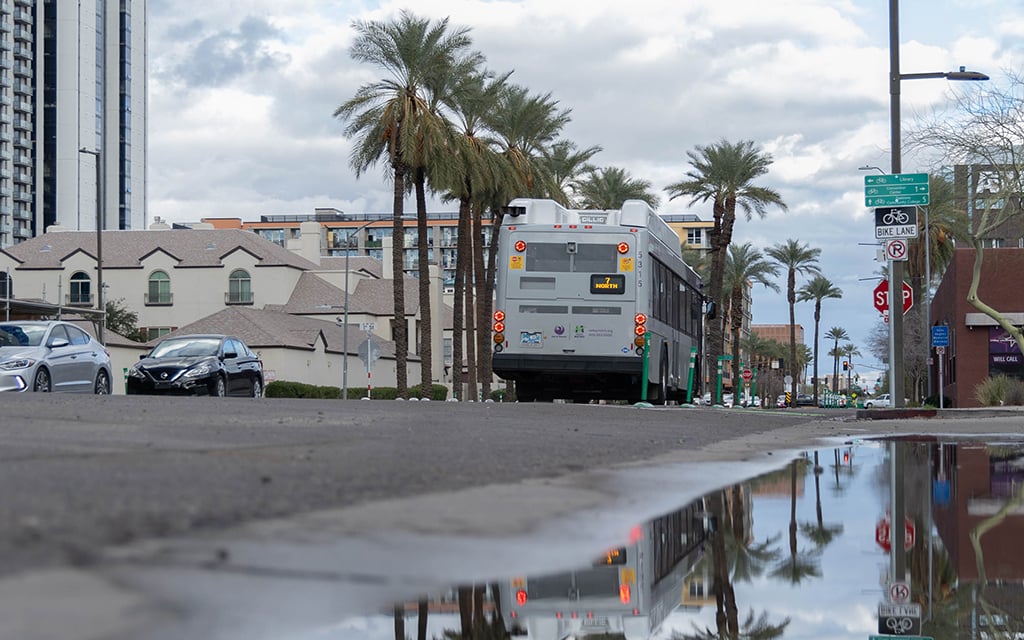
It’s been a rainy week in Phoenix, and puddles have accumulated and made the roads slippery across the Valley. Photo taken in downtown Phoenix on Feb. 8, 2024. (Photo by Sam Ballesteros/Cronkite News)
PHOENIX – With the winter months bringing rain to the Valley, concerns are growing over driver safety on the roads.
According to a study by the Arizona Department of Transportation, almost 4,300 accidents in 2022 occurred when there was precipitation, about 3.5% of all crashes for that year.
And these accidents aren’t just due to the weather, but a lack of preparedness among both native and nonnative Arizonans.
“Having so many people from other states that have a lot of rain are used to driving in the rain, so they drive normal, which causes a lot of accidents because our people (Arizonans) are driving slow,” said Kathleen Hardison, director of operations and a trainer for the Cantor Driving School.
Though non-Arizonans may feel comfortable driving in rainy weather conditions from prior experience, Arizona’s irregular rainy seasons create conditions some drivers may not be familiar with.
ADOT’s Arizona Driver License Manual calls for extra caution 30 minutes into rainfall and also explains the heightened risk of hydroplaning due to how “grime and oil on the road surface mix with water and make the road slippery.”
Arizona roads do not experience regular rainfall, as other states may, leading to more oil buildup from the dry, summer months. When rain does finally make an appearance in the Valley, all that oil creates slick road conditions, dangerous to even the most experienced drivers.
More than 2,000 people were injured or killed in a crash in 2022 when roads were wet, according to ADOT.
Mechanics are urging drivers to get their cars looked over as the seasons change to ensure their vehicles are prepared for all weather conditions.
“You want to find these things out before they happen,” said Dave Martin, owner of Martin’s Auto Repair in central Phoenix. “That’s why we really push the fact of, bring your car into a place where they have the ability to know if they see something that is wrong or see something that is going to give you problems.”
The vehicle features most often affected by the wear and tear from the summer heat include wiper blades, tires and batteries.
“After about five years out here, the rubber starts to crack on the tires,” Martin said. “Batteries are another thing that we notice in the wintertime … will fail more. And they fail in the summertime, too, because we get extreme heat, but when the temperature changes from 100 degrees to 50, the batteries don’t like that.”
Tires that are worn or bald have less traction and can cause a loss of contact with a wet road, inevitably leading to hydroplaning.
In the event of hydroplaning, Cantor’s Driving School advises new drivers not to slam on their brakes or accelerate but instead to take their foot off the gas and allow the car to slow down. If the car has anti-lock brakes, drivers should lightly apply their brakes to help regain traction.
“People are driving way, way faster than they should and then of course when you get in climate conditions … (and) can’t stop, it’s going to cause an accident,” Martin said.
The overall lesson from Martin and Hardison: slow down.

